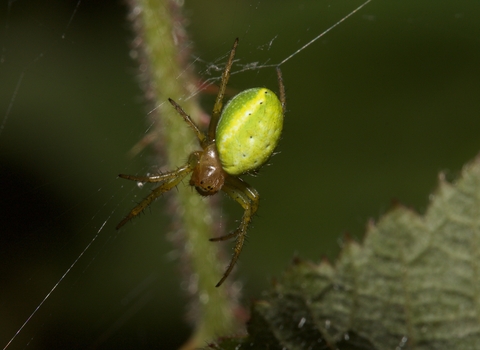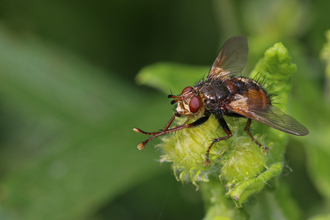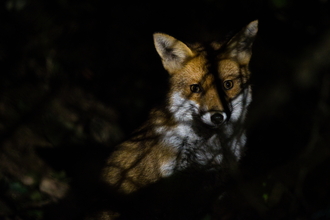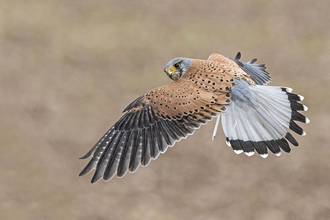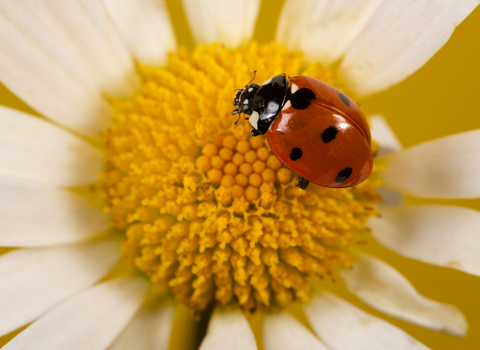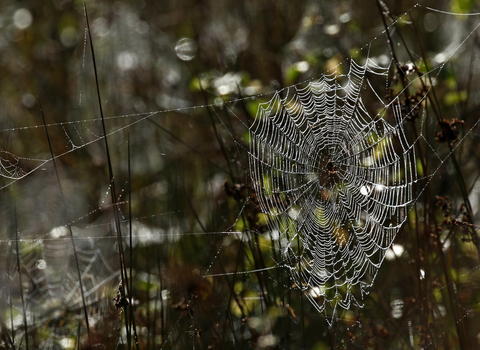A glimpse of a hairy, long-legged shape scuttling under the sofa can give the staunchest naturalist the heeby-jeebies. But on autumn mornings the jewelled geometry of orb spider-webs spangled with dewdrops is breath-taking. Watching spiderlings “ballooning” - heading skywards on strands of gossamer – is uplifting in every sense.
Local expert Brett Westwood picks out some species to spot across Worcestershire. We hope you’ll love spiders a bit more once you’ve read on…
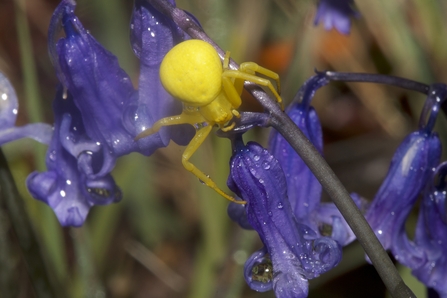
Crab spider by Rosemary Winnall
Flower crab spider Misumena vatia
A hoverfly lands on a buttercup intent on a nectar meal, but it is entering a trap. For hours or even days, the flower crab spider lurks motionless and camouflaged among the blossoms, her long forelegs spread wide. When prey arrives, she strikes with astonishing speed in a pincer movement of limbs. The handsome crab-like females are common in gardens and flowery spots and can be white or yellow to match their choice of background. They are very hard to spot but a giveaway sign is a bee, fly or butterfly that remains suspiciously still.
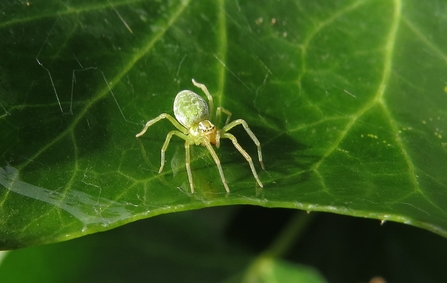
Nigma walckenaeri by Jean Young
Nigma walckenaeri
Nigma walckenaeri is a local spider in Britain but one which is colonising most of Worcestershire and is spreading northwards. Females build a delicate sheet web in the hollow of a leaf and hidden beneath, dining on trapped insects and waiting for the male who has a chestnut head and thorax. He sometimes turns the tables by lunching on his mate. Nigma is commonest in gardens and churchyards in autumn and early winter.
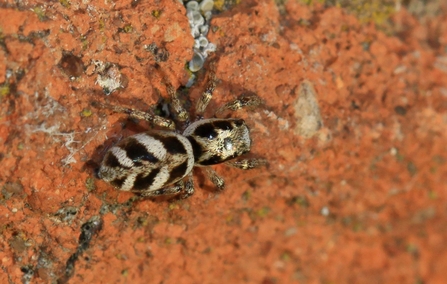
Zebra spider by Wendy Carter
Common zebra spider Salticus scenicus
You’re being watched by sharp eyes as you walk down the street. They belong to the common zebra spider that lives on sunlit walls and fences. Its chevrons of black-and-white make it easy to spot as it moves jerkily along or stealthily stalks its prey. The final attack is a lightning–fast leap but the spider trails a safety line of silk, just in case it misses. Look closely at one and it swivels its head and thorax to watch you back. Offer it a greenfly on a matchstick and it may well honour you by accepting.
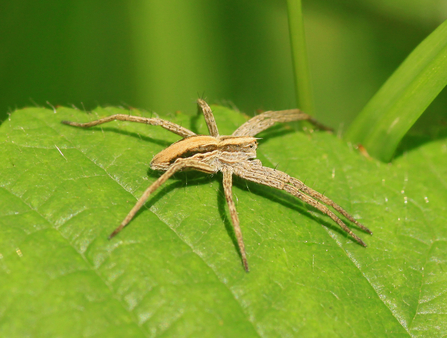
Nursery web spider by Wendy Carter
Nursery web spider Pisaura mirabilis
Basking on a leaf in the spring sunshine, the nursery web spider has an elegant, almost feline grace. Both sexes have long legs and furry streamlined bodies and hunt prey by ambushing it. Males seduce their mates with a wedding gift of a fly wrapped in silk; while she opens her present, he mates with her. Some sneaky males offer an empty package, others get hungry and eat the gift themselves. Not all escape with their lives. The female carries her eggs in a silk-bound sac under her body then spins a special nursery tent for the spiderlings.
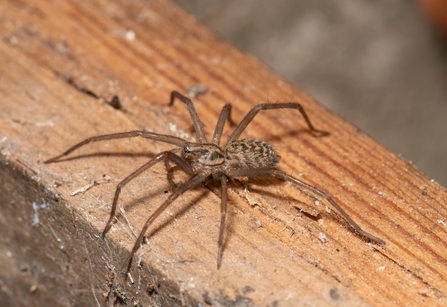
House spider by Gary Farmer
House spider Tegenaria domestica
Frightened by house spiders? You’re in elevated company. Among several very similar species is the Cardinal spider, which is rumoured to have scared Cardinal Wolsey at Hampton Court. An ecclesiastical connection continues in Pershore where a colony lives in the abbey walls. In autumn male house spiders come indoors to look for a mate, tapping on the female’s funnel web to see if anyone’s at home. You can imitate them or simulate a buzzing fly by gently touching the web with an electric toothbrush or a tuning fork. If their fast scuttling alarms you, don’t worry- they only travel in short bursts.
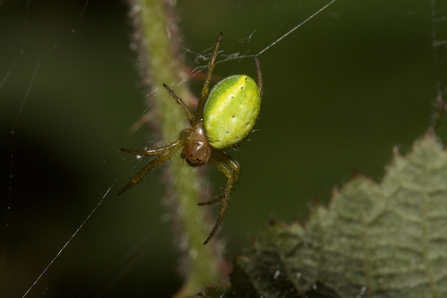
Cucumber spider by Rosemary Winnall
Cucumber spider Arianiella cucurbitina
This psychedelically vivid spider is only small but compensates for its lack of size with its spectacular lime-green abdomen, red-spotted under its tip. Its name derives from its colour, which disguises it well among the unfurling spring leaves. I look for them between spring and early autumn in wooded glades and scrubby places as well as in my garden where the females build small, rather disorganised orb-webs to trap flying insects. The three species of cucumber spider are an identification challenge even to spider experts who separate them by microscopic examination of their reproductive organs.
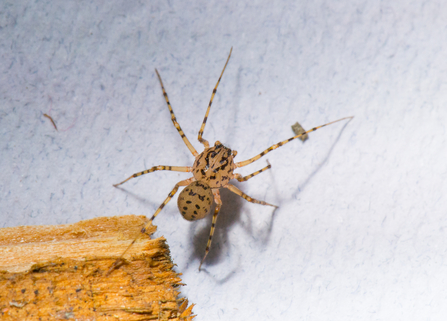
Spitting spider by Gary Farmer
Spitting spider Scytodes thoracica
A very special find in Worcestershire, spitting spiders live only in buildings and are rare but probably overlooked. They are well-named and stalk their prey; when it nears its target, it spits a stream of gum and poison, which almost instantly hardens, tying down its hapless victim. Its body is only about 5 mm long but is easy to identify by its spotty appearance and large head and thorax in which it produces the gum.
Wasp spider by Brett Westwood
Wasp Spider Argiope bruennichi
Brilliantly coloured in jazzy stripes of black, white and yellow, the female wasp spider looks too tropical for our countryside. She is completely harmless to us but eats grasshoppers and crickets. They’re found in Gloucestershire and Shropshire so the first Worcestershire record is overdue! Look for the large webs in rough grassland, heathy or marshy places in late summer and early autumn.
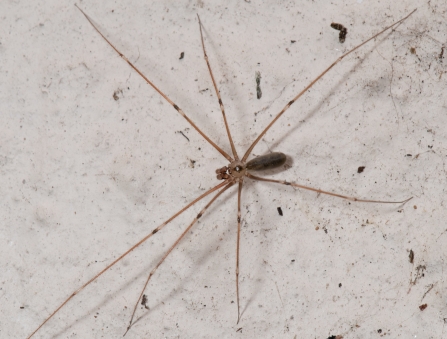
Daddy longlegs spider by Gary Farmer
This astonishingly long-limbed spider trails its cobwebs incontinently over every vertical surface in our houses. When disturbed it vibrates rapidly in its untidy web, its body becoming a blur. These delicate spiders use their long legs to fling silk at much bulkier house spiders, tying them down. Look out for females carrying their brown egg-clusters, like bunches of grapes, in their jaws.

